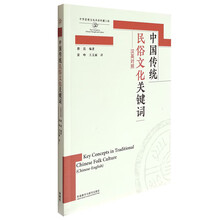The Prison-Door
THRONG of bearded men, in sad-colored garments and gray,steeple-crowned hats, intermixed with women, some wearing hoods,and others bareheaded, was assembled in front of a wooden edifice, the door of which was heavily timbered with oak, and
studded with iron spiks.
The founders of a new colony, whatever Utopia of human virtue and happiness they might originally project, have invariably recognized it among their earliest practical necessities to allot a portion of the virgin soil as a cemetery, and another portion as the site of a prison. In accordance with this rule, it may safely be assumed that the forefathers of Boston had built the first prison-house, somewhere in the vicinity of Cornhill, almost as seasonably as they marked out the first burial-ground, on Isaac Johnsons lot, and round about his grave, which subsequently became the nucleus of all the congregated sepulchres in the old church-yard of Kings Chapel. Certain it is,that, some fifteen or twenty years after the settlement of the town, the wooden jail was already marked with weather-stains and other indications of age, which gave a yet darker aspect to its beetle-browed and gloomy front. The rust on the ponderous iron-work of its oaken door looked more antique than anything else in the new world. Like all that pertains to crime, it seemed never to have known a youthful era. Before this uglyedifice, and between it and the wheel-track of the street, was a grass-plot, much overgrown with burdock, pig-weed, apple-peru, and such unsightly vegetation,which evidently found something congenial in the soil that had so early borne the black flower of civilized society, a prison. But, on one side of the portal, anti rooted almost at the threshold, was a wild rose-bush, covered, in this month of June, with its delicate gems, which might be imagined to offer their fragrance and fragile beauty to the prisoner as he went in, and to the condemned criminal as he came forth to his doom,in token that the deep heart of Nature could pity and be kind to him.
This rose-bush, by a strange chance, has been kept alive in history; but whether it had merely survived out of the stern old wilderness, so long after the fall of the gigantic pines and oaks that originally overshadowed it--or whether, as there is fair authority for believing, it had sprung up under the footsteps of
the sainted Ann Hutchinson, as she entered the prison-door--we shall not take upon us to determine. Finding it so directly on the threshold of our narrative, which is now about to issue from that inauspicious portal, we could hardly do otherwise than pluck one of its flowers and present it to the reader. It may serve, let us
hope, to symbolize some sweet moral blossom, that may be found along the track, or relieve the darkening close of a tale of human frailty and sorrow.
第一章 狱门
一群满脸胡子的男子,身穿深暗色的衣服,头戴灰色的尖帽,其中还混杂着一些扎了头巾或光着脑袋的妇女,聚集在一所大木屋前面。屋门是栎木做的,很厚实,上面钉满了大头铁钉。
新殖民地的创始人,不管他们原先设计的是一种什么样的人间美满、幸福的乌托邦,可都一定承认,根据他们草创时期的实际需要,应从这片处女地中划出一部分做墓地,再划出一部分做监狱的基地。按照这一常规,可以万无一失地推断,波士顿的祖先们在伊萨克.约翰逊①的地段内,在他的坟墓周围划出了最早的葬地,并且几乎与此同时,还在康布尔附近一个地方建立了第一所监狱。伊萨克·约翰逊的坟墓后来成了皇家旧教堂墓地里一片坟墓的中心。的确,在这个城市建成大约十五至二十年以后,那所木造监狱由于风吹雨打和年深日久已是痕迹斑斑了。这就给那狰狞而阴森的监狱正面更增加了一番凄凉景象。它那栎木大门上面沉重的大头铁钉长满了铁锈,看上去比美洲的任何东西都要古老。它像一切有罪的东西一样,从不知道自己有过一段青春时期。在这座阴森可怕的木屋前面,在它同街上那条车道之间,是一块草坪,上面长满了牛蒡、茨藜、蒺藜牵牛以及诸如此类的很不雅观的植物,显而易见,它们在这片很早就开出了文明社会的黑花——监狱——的土壤中,找到了适宜生长的养料。然而,在入口的另一面,几乎就在门槛上生了根的,是一丛野玫瑰,它在这六月的天气里,缀满了宝石般晶莹的花朵。这也许可以设想,这些花朵要把自己的芳香和娇艳献给那步人牢房的囚犯,献给那跨出牢房去接受极刑的死囚,借以表示造物主的内心对他的同情和仁慈。
这一丛玫瑰由于一个奇妙的机缘,已永垂青史了。但是,它是否仅仅是那原来遮盖它的那些参天古松和栎树倒落以后很久而从荒芜的原野中幸存下来的呢?还是有充分的证据认为是在成了圣徒的安·哈钦森走进狱门时,在她的足迹下萌生出来的呢?我们可以姑置勿论了。由于这丛玫瑰恰好就在我们现在就要从那不祥的狱门讲起的故事的开头,我几乎情不自禁地要摘下一朵来奉献给读者。我们希望,它能象征故事进程中那一路上可以找到的芬芳宜人的道德之花,或用来冲淡些这一人类的脆弱和悲哀的故事的阴暗结局。
展开










